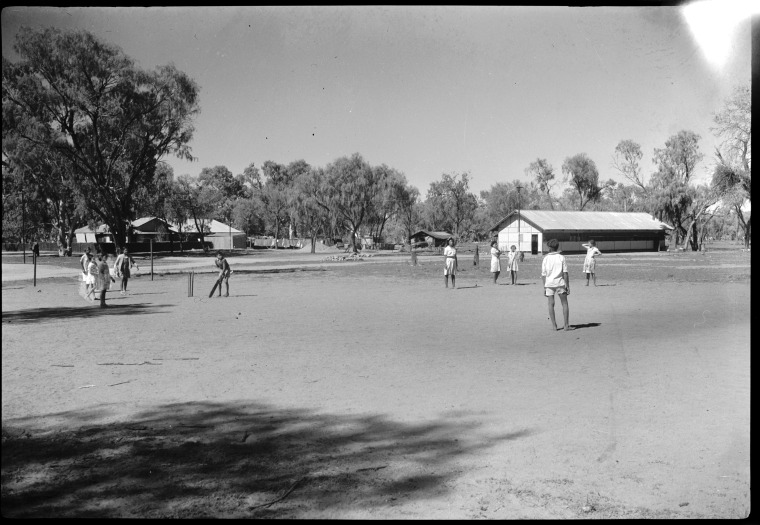
Policy re removal of children from the Northern Territory is a file held by the National Archives of Australia, located in its Canberra office. A digital copy of the file is available.
Northern Territory Administration – Welfare Branch – interstate visits 1961-1966 [reference copy] is a file held by National Archives of Australia. It is located at the Darwin office. The records relate to the Part Aboriginal Education Scheme, an initiative of the Northern Territory Welfare Branch. After the passage of the 1953 Welfare Ordinance the Director of…
As part of the UK Independent Inquiry into Child Sexual Abuse, which ran from 2015-2022, the Inquiry investigated child migration programs to Australia, Canada, New Zealand and Zimbabwe. Research and hearings took place in 2017, and the Investigation Report was published in March 2018. The Inquiry asked a series of questions about child migration schemes,…

This is a photograph of children playing cricket at St Mary’s Hostel, Alice Springs. It shows approximately 10 children playing cricket on a dirt playing ground, with hostel buildings and trees visible in the background. This photo is one of six photos of children at St Mary’s Hostel taken by John K. Ewers in 1950…
Model legislation to harmonise adoption laws in all Australian jurisdictions was an initiative of the Australian Commonwealth in the 1960s. One pressing issue behind this move towards uniformity in adoption legislation in Australia was the lack of recognition of interstate adoption legislation. Jurisdictions all took different approaches to maternal consent and to processes such as…
The Canossian Daughters of Charity is a Catholic order founded in Italy in 1808. They first came to Australian in 1949, and arrived in Darwin in 1970 with the purpose of establishing a residential children’s home – Bakhita Village. They ran the children’s home from 1972 until late December 1974, when it was destroyed by…
Bakhita Village was opened in the Darwin suburb of Coconut Grove in January 1972 by the Canossian Daughters of Charity, a Catholic order from Italy. It was a small complex of five family-style homes that provided long and short term residential care for children. Bakhita Village was open for just short of three years before…
Adoption is the legal process by which a person legally becomes a child of the adoptive parent(s) and legally ceases to be a child of his/her existing parent(s). The first adoption law to be passed in Australia was in the Colony of Western Australia in 1896, and other jurisdictions followed with their own legislation. However,…
A compound was an area in which Aboriginal people were confined within a town district. This concept was developed by Baldwin Spencer when he was Chief Protector of Aboriginals as a way of separating and controlling Aboriginal people in the Northern Territory. Compounds were to be self-sufficient and Aboriginal people were expected to carry out…
Annexe is a term used to describe a smaller residential facility that is part of a larger institution. For example, the Victoria Park (Riverbank) Annexe was part of the youth detention facility, Riverbank, even though it was located many miles distant. Click here to see the full Find & Connect glossary